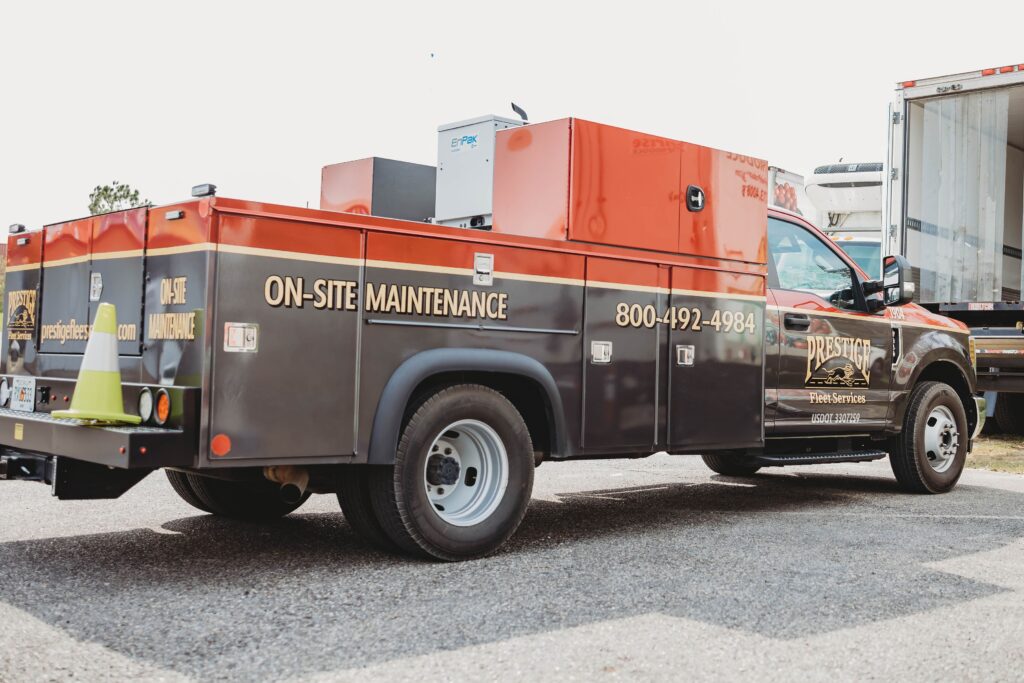
Maintaining a fleet of vehicles is no easy task, and the importance of having a well-organized fleet maintenance schedule cannot be overstated. Proper maintenance ensures the safety, efficiency, and longevity of your vehicles, minimizing downtime and repair costs. When it comes to ensuring your fleet operates smoothly, relying on professional fleet maintenance services can be a game-changer. But how do you create a maintenance schedule that works for your fleet? Let’s explore the key elements of an effective fleet maintenance schedule and how you can implement it.
1. Understand the Importance of Fleet Maintenance
The primary goal of a fleet maintenance schedule is to keep your vehicles in optimal working condition, preventing breakdowns and reducing repair costs. Regular maintenance also helps you adhere to legal and safety standards. By scheduling routine checkups, oil changes, tire rotations, and other essential services, you can increase the lifespan of your vehicles and enhance their performance. Neglecting regular maintenance, on the other hand, can lead to costly repairs, loss of productivity, and even safety hazards for your drivers.
For businesses that depend on transportation, keeping your fleet running efficiently is critical to your bottom line. Not only does it ensure timely deliveries, but it also helps maintain customer satisfaction and brand reputation. The key to achieving these outcomes is creating a well-structured fleet maintenance schedule that works for your specific needs.
2. Know Your Fleet’s Specific Needs
Every fleet is different, and understanding the specific needs of your vehicles is the first step in creating a tailored maintenance schedule. Factors such as the type of vehicles you own, their age, and how frequently they’re used will influence your maintenance requirements.
For example, if you have a fleet of trucks that regularly travel long distances, they may require more frequent oil changes, tire rotations, and brake inspections than a fleet that only makes short trips. Similarly, older vehicles may need more attention and repairs than newer ones. Understanding these variables will help you design a schedule that is realistic and manageable.
3. Implement a Preventive Maintenance Program
A preventive maintenance program is one of the most effective ways to stay on top of vehicle repairs and upkeep. Preventive maintenance includes tasks like fluid checks, tire pressure monitoring, brake system inspections, and more. By addressing minor issues before they escalate into major problems, you can significantly reduce the risk of unexpected breakdowns.
When creating your schedule, it’s important to set regular intervals for these tasks. A good rule of thumb is to schedule preventive maintenance every 5,000 to 10,000 miles or according to the manufacturer’s recommendations for each vehicle in your fleet. You can work with fleet maintenance services to determine the best intervals for your specific vehicles and ensure that all aspects of maintenance are covered.
4. Use Technology for Fleet Management
In today’s world, fleet management software plays a critical role in managing your maintenance schedule. These tools help streamline the process by tracking maintenance due dates, vehicle performance data, and service history. Many fleet management systems come with automated reminders to alert you when it’s time for an oil change, tire replacement, or other services.
Leveraging technology to monitor your fleet’s condition allows you to stay organized and ensures no maintenance task is overlooked. Plus, it reduces the chances of human error, which can lead to missed maintenance schedules or unnecessary delays.
Additionally, some fleet management software integrates with GPS tracking to provide real-time data about vehicle usage. This information can help you optimize your maintenance schedule based on how much wear and tear each vehicle is experiencing.
5. Train Your Drivers to Spot Potential Issues
Your drivers are on the front lines when it comes to identifying potential issues with your fleet. They are the first to notice unusual noises, changes in performance, or even minor problems like tire wear. Training your drivers to report these issues promptly can save you time and money by addressing problems early on.
Encourage your drivers to perform pre-trip inspections and log any abnormalities they encounter. This data can then be used to adjust your maintenance schedule or provide early warnings of potential breakdowns.
Additionally, teaching your drivers to operate vehicles properly can extend their lifespan. Simple habits, such as smooth acceleration and braking, can help preserve the engine, brakes, and transmission.
6. Plan for Unforeseen Repairs
Even with the most comprehensive maintenance plan, unexpected repairs can still arise. It’s important to allocate funds in your budget for unforeseen repairs and to plan for the occasional breakdown. Emergency repairs can be costly, but having a contingency plan in place can help you manage these expenses without disrupting the flow of your business.
To minimize the chances of emergency repairs, keep track of the health of each vehicle in your fleet. If a vehicle starts to show signs of serious wear, consider retiring it early and replacing it with a more reliable option. This proactive approach helps reduce downtime and keeps your fleet operating smoothly.
7. Regularly Review and Adjust Your Maintenance Schedule
The best maintenance schedules are flexible and evolve over time. As your fleet grows, ages, or changes in terms of usage, your maintenance needs will also shift. Regularly reviewing and adjusting your schedule ensures that you’re staying on top of all necessary tasks and adapting to any new circumstances.
If a particular vehicle or part of your fleet requires more frequent attention, modify your schedule accordingly. Conversely, if certain vehicles are in better shape than expected, you might be able to extend their maintenance intervals.
Conclusion
Creating a fleet maintenance schedule that works is essential for keeping your vehicles in top condition, reducing costly repairs, and ensuring the safety of your drivers. Whether you rely on fleet maintenance services or manage everything in-house, the key is to stay organized, anticipate needs, and take a proactive approach to vehicle care. By leveraging technology, training your drivers, and continuously reviewing your schedule, you can maintain a reliable and efficient fleet.
For businesses looking to keep their fleet running at peak performance, partnering with professional fleet services providers can be a game-changer. Instantcarfix offers comprehensive fleet management solutions, providing the expertise and tools needed to keep your fleet in top shape for years to come.


